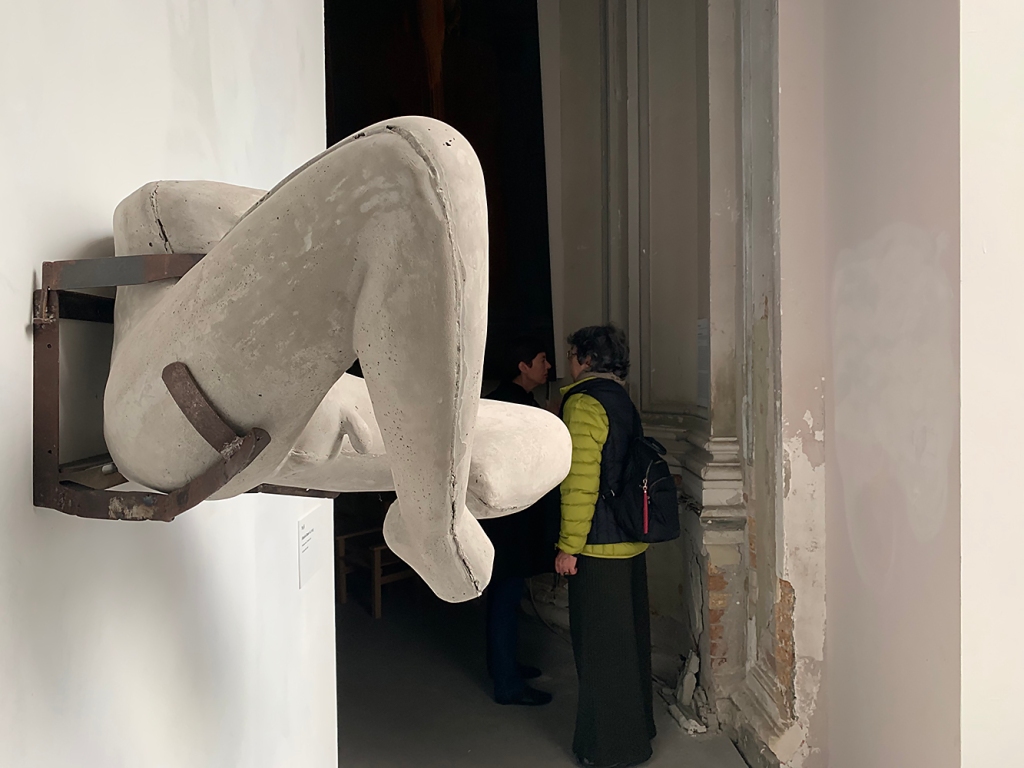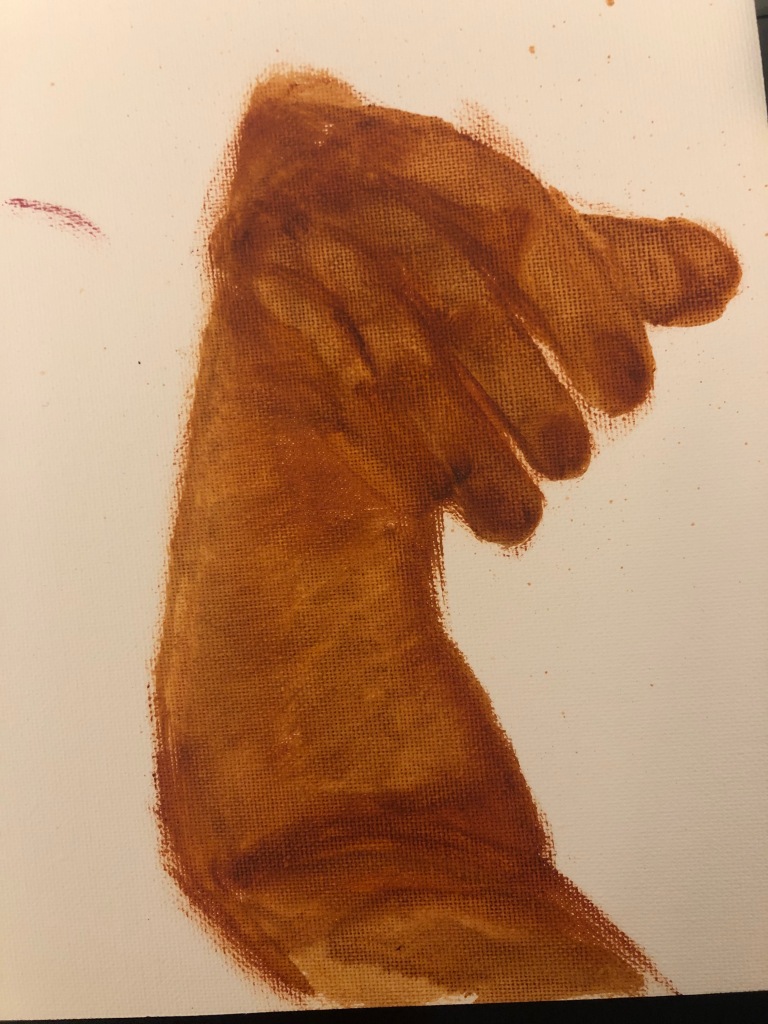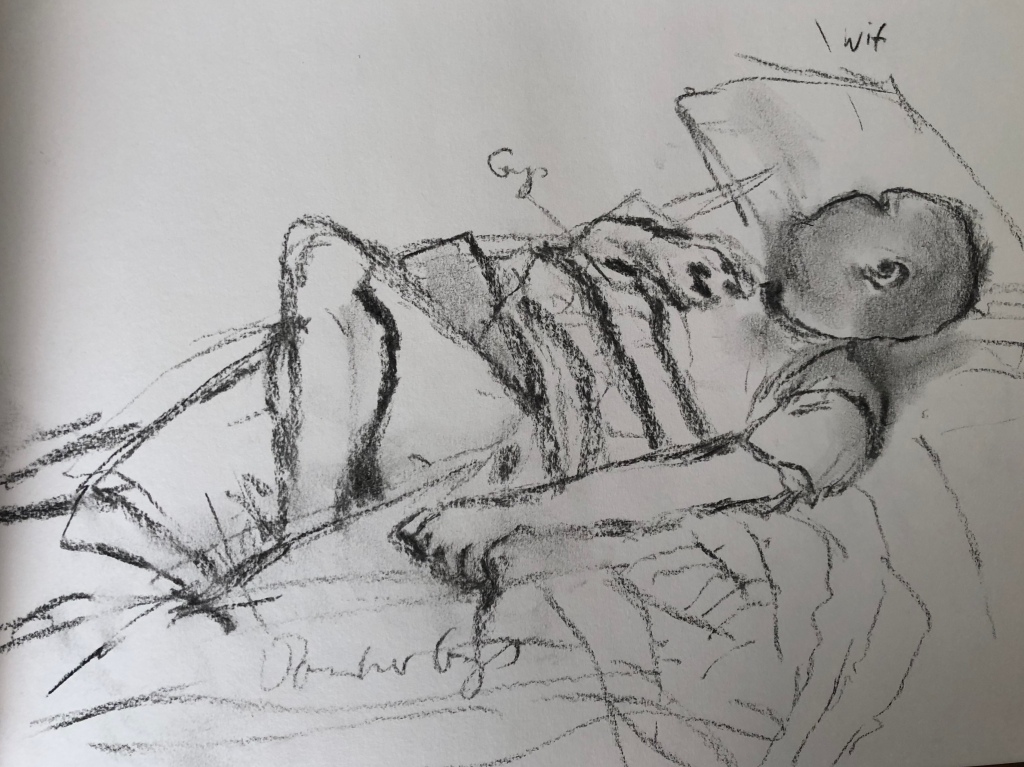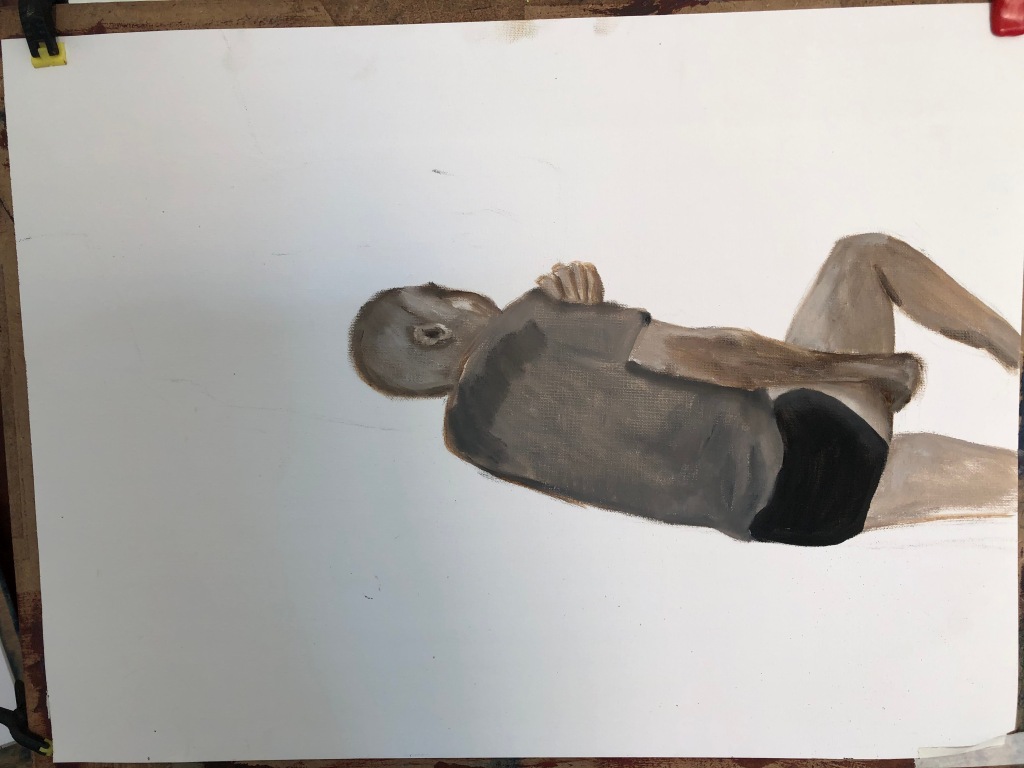EXERCISE DRAWING THE HUMAN FIGURE
I realised at the start of this part of the course that I will be relying mostly on myself and maybe my husband in terms of using a model. I found it difficult to have him sit for me and decided to make use of photos as well. Finding him sleeping and in a lying position, taking a short nap, was a bit easier as I could do some preliminary sketches without bothering him, as well as he felt comfortable with the idea. There was still the hope that I could be joining a figure drawing group at a local art group, but due to lack of students enrolling, it has not started as planned. I am hopeful, but on the waiting list. I started Part Three by working on the Research projects and doing some self portraits. My enthusiasm was to jump in and get going, but I soon realised making self portraits to be an accurate representation of myself was hard and that I need lots of learning and hours of painting. I was also drawn to read more on Deleuze and Foucault and the philosophy of our image making as ‘visibilities’. There is a reference to Hsieh Ho, a sixth-century Chinese painter who recommended that the painter first reflect the “vital breath”- this is create movement, and then ‘seek the skeleton’, that is, know how to use the brush. Deleuze differentiates a ‘respiration-space’ from a ‘skeleton-space’ (espace-ossature) I see this observing the human figure in painting as a process of seeing, then using the brushes in the making process of becoming.
Doing quick sketches is not that impossible task as the idea of the learning as I understood was to focus on line and tone. I need to keep in my mind my tutors advice to construct forms representationally by using cast light and painted tonality to describe form. I plan to start by doing grisaille underpaintings and draw directly with paint on my canvas. I have taken care to avoid over using whites and make use of mixed colours. As a painter I prefer to mix my colours with a limited palette choice, which is mostly, white, burnt umber, blue, red, yellow and black. I also added vanDyk brown to my regular palette and are still contemplating the yellow and red hues. On my darker skin I found that I would go to dark from the start, even if I start with the darks first. I am trying to draw mostly with diluted oil paint ( using Sansoor as thinning agent) and painting with Burnt Sienna.
An opportunity to work with my model came up whilst we were doing some reading. My model was comfortable to let me paint his legs. I started off with paint drawing with Burn Sienna and then had to mix a few flesh colours. Looking at it the next day, I realised that the colours were very red – due to evening lighting. I suggested we try again during the day…


Having looked at videos of artists drawing with paint and then working wet on wet I can see some mistakes I made, and learn from it:
It is clear that the lighter areas are not clear enough in value – need more lightness as well as work on cast shadows to show change in values.
I hope to work more on this piece and see this as part of how I observe the human figure.
Techniques to work with dry brush and not dip the drawing brush into too much Sansodor or paint is hard.
I am also learning that I should work faster, but accurate – looking needs practice.

I am reminded of above Chinese artist whose work I saw at the Venice Biennale, 2019, who use men as her models. The series of cement sculptures “Flesh in Stone” comprises only five figurative works since 2012 — a pace of one or two per year. Yu generates these forms through a series of live sittings with male models in her studio, where instructs her models to test the limits of their bodies to the point of physical exhaustion, and, it must be said, to the brink of boredom or a meditative nothingness. Trough her work she reflect and moderate the fragile presence of human and objects in their everyday environment and often turn the space of art into the site of labour.
I also tried to paint my own arm in the same way and will use this to practice my skills.


Linear Figure Study
I made some quick sketches of my husband/model taking a nap and wanted to capture some of this in the observational figure painting exercise. I am thinking about the fragility of the moment and his unawareness of being seen. I cannot control the scene, as he moves/turns in his sleep.




Doing above drawings and paintings, made me contemplate if I could just keep the sleeping body of above painting, just hanging in space – I did not add the whole body and are asking questions about the context in which I could use this painting. I have looked at the rest of the course work and wonder if I could come back to this drawing for more exploration. Exploring painting by first creating a tonal effect with wet/diluted Burnt Sienna, made me realise that it is a much easier process to find the main outlines – one could also use a rag.
EXERCISE Linear Figure Study
I have looked at an online video painting demonstration and used the model for this drawing.

I also used an online drawing model and painted with Burnt Sienna – the idea was to wash the colours from darker tones to light. I was not very successful at keeping a dry brush at hand (rag should be handy) – maybe a bit clumsy using this method, although I decided to come back to these exercises and do more drawings with paint.

Tonal figure study

Above scene reminds me of the Goya painting of the Maha in clothes: it is the staring back gaze I captured. I know my model was comfortable and almost dozing off into a short nap. I am also thinking about the reason for my representing this moment – I started it as an exercise to show a linear figure study, and draw with my brush as accurately as I can. I play around with the idea of not putting the figure into a realistic background, but work on tonal values.

Looking at above painting I struggled with values, light in the room changed as it was midday. I relied on a photo to work further and see I have an issue with foreshortening of the model.
